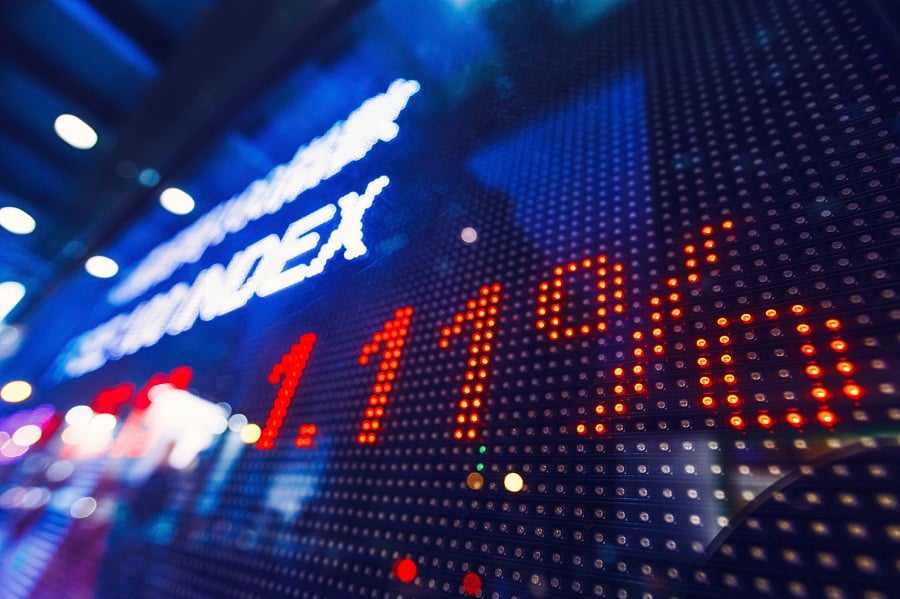

As the economic fallout from COVID-19 continues to ripple across the financial markets, financial advisers will need to be especially vigilant when working with clients who depend heavily on investment income.
With the Federal Reserve’s emergency rescue efforts driving bond yields toward the floor, dividend income might seem like a natural move for advisers looking for an income option for clients, but that is an area suddenly layered with new risks.
Through April 23, at least 20 S&P 500 companies have suspended their dividend payments, which compares to zero dividend suspensions by S&P companies over each of the past two years.
In fact, over the past eight years combined, a total of just eight companies have suspended their dividend payments.
Prior to 2020, the last S&P 500 company to eliminate its dividend was Pacific Gas & Electric in November 2017, which was brought down by the California wildfires and has since been removed by the large-cap index.
“Usually, about two-thirds of S&P 500 companies increase their dividends annually, but what’s happening here is an extremely unusual massive global event,” said Howard Silverblatt, senior research analyst for S&P Dow Jones Indices.
“Cutting dividends in normal times is the kiss of death, because it’s an admission that a company has a cash-flow problem and it’s not just short term,” he added. “Typically, dividends are one of the last things to go.”
Silverblatt likes to explain dividends as analogous to a paycheck for shareholders. When dividends get reduced, which is a traditionally rare but suddenly more common occurrence, the shareholder gets a pay cut.
But when a dividend is eliminated, “you just got fired,” he said.
Financial advisers are not missing the message that income is becoming scarce.
“We expect more companies to cut or suspend their dividend in order to shore up cash,” said Nicholas Hofer, president of Boston Family Advisors.
“There are companies that weathered the financial crisis with their dividend untouched, and their balance sheets and cash positions remain strong during this time,” he added. “As an alternative to dividends, we continue to look at munis as they can be cheap relative to Treasuries.”
Hidden dangers
As a benchmark for comparison, the financial crisis of a decade ago represents that last time dividends were suspended at such significant levels.
Through the first three weeks of April, the S&P 500 saw 13 companies announce dividend increases, nine companies announce decreases, and 10 companies suspend their dividends, for a net negative score of six. And the month isn’t even over yet.
For instance, General Motors announced this morning that it is suspending its dividend.
The last time the S&P 500 companies produced a net negative dividend score was March 2009 when seven companies increased dividends, one initiated a dividend, and 12 companies announced dividend decreases.
“This is a brutal environment for clients who want to live off their investment income,” said Dennis Nolte, vice president at Seacoast Investment Services.
Because of the bond-like math of dividend yield calculations, investors can sometimes get trapped and confused when it comes to dividend investing.
A $100 stock, for example, paying a $1 dividend represents a 1% dividend yield. But if that stock price falls to $50 and the dividend payments remain unchanged, the dividend yield suddenly spikes to 2% and could look more attractive to an uninformed investor.
In extreme examples, some companies and income-focused funds, can look like dividend bonanzas, when they might be signs of companies in trouble.
“With bond yields so low, everyone will be back to chasing yields,” said Scott Bishop, executive vice president at STA Wealth Management.
“When anyone looks at a stock's dividend yield on any search engine, it shows past cash dividend divided by current price, so some are showing overly optimistic dividend yields,” he added. “That is going to be especially true in challenged industries like oil and gas, hospitality and REITs.”
Todd Rosenbluth, director of mutual fund and ETF research at CFRA, also warns against chasing yields that “go up for the wrong reason.”
“For some companies, it’s been part of their DNA to reward shareholders with dividends, but we’re in a whole new world now where earnings are weakening and the prospects for the rest of 2020 are cloudy at best,” he added. “Companies are having to make decisions of focusing on the business and keeping cash available for rainy day funds.”
Regarding the suddenly spiking dividend yields from some companies and funds, Rosenbluth advises caution.
“The opportunity to earn higher yields is greater than before, but don’t get fooled by a higher dividend yield to think the income is stable,” he said. “The likelihood of a cut is harder to believe from some companies, but it is a risk because unlike diamonds, dividends are not forever.”

Looking to refine your strategy for investing in stocks in the US market? Discover expert insights, key trends, and risk management techniques to maximize your returns

The RIA led by Merrill Lynch veteran John Thiel is helping its advisors take part in the growing trend toward fee-based annuities.

Driven by robust transaction activity amid market turbulence and increased focus on billion-dollar plus targets, Echelon Partners expects another all-time high in 2025.

The looming threat of federal funding cuts to state and local governments has lawmakers weighing a levy that was phased out in 1981.

The fintech firms' new tools and integrations address pain points in overseeing investment lineups, account monitoring, and more.
RIAs face rising regulatory pressure in 2025. Forward-looking firms are responding with embedded technology, not more paperwork.
As inheritances are set to reshape client portfolios and next-gen heirs demand digital-first experiences, firms are retooling their wealth tech stacks and succession models in real time.
